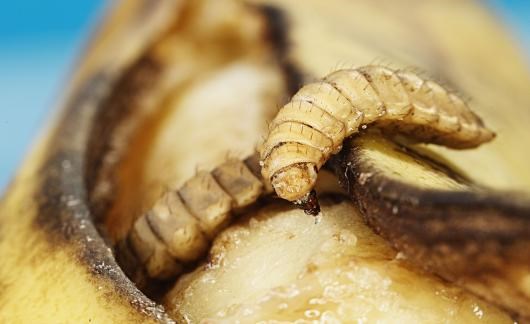Facts:
The Black soldier fly originates from southern United States but has spread throughout the world's hot climate zones. Their optimal temperature is 27-35 degrees. The group of soldier flies has not got their name because they are particularly warlike, but because they have two rearward-facing backbones. A female can add more than 700 eggs. The eggs hatch to larvae, which after two weeks turn into puppies. After another two weeks a fly comes out of the pupa, whose adult life is a week long. The larva consists of more than 40 percent protein and just over 30 percent fat. An advantage of the Black soldier fly is that it does not eat anything like an adult. This means that it is not interested in buzzing around cowpat, wounds and plates with food.
